Air-to-Air Refuelling (AAR)

So here’s an account about how it was done..all those years ago!

The Uruguayan Air Force (Fuerza Aérea Uruguaya – FAU) Cessna A-37B Dragonfly attack jet had the large tanker aircraft in his gun sight. The Argentine Air Force (Fuerza Aérea Argentina – FAA) KC-130H Hercules tanker with its two drogue and probe hoses extended, was flying alone in its neighbours’ airspace whilst keeping her station on a race track circuit at FL 10 and 220 kts. The mission of this Falklands/Malvinas veteran was to re qualify pilots of Uruguay’s Escuadrón Aéreo no. 2 (Caza)/EA2 (Squadron 2 -Fighters) on the fine art of air-to-air refuelling (AAR). These exercises between the two neighbouring air forces began during 2002 to qualify the crews for the later cancelled combined exercise Águila III (Eagle III). The exercise, now conducted biennially, was designated Tanque (Tank in Spanish)

As Uruguay lacks air refuelling aircraft (see introductory note above) – both FAU C-130Bs are not fitted with AAR kits – Escuadrón 2 pilots train alongside one of the two argentine KC-130Hs (TC-69 and 70). Initial missions on these tasks by FAU crews were conducted during 1990 as co-pilots on four USAF A-37B of the 24th Tactical Air Support Squadron “Golden Jaguars” detached to Uruguay from Howard AB (Panama Canal Zone) alongside a USAF KC-135 tanker.
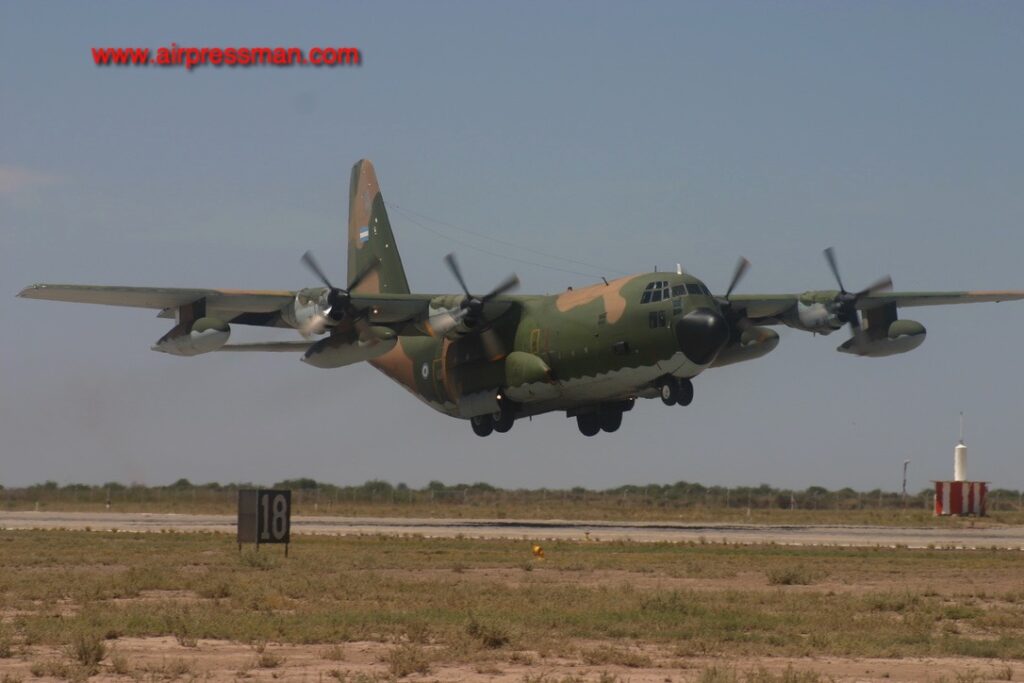
The FAU combat squadrons (EA1, 2 and EVA-Escuadrón de Vuelo Avanzado /Advanced Flying Squadron) are all based at Tte. 2do. Mario Walter Parallada AB (Brigada Aérea 2/Air Brigade 2) at the city of Durazno, 91 miles(188 km) north of the capital Montevideo. In addition to the A-37B jets (referred as “Alfa” by FAU crews) argentine built FMA IA-58A Pucará twin engine attack turboprops (designated A-58) are attached to EA1 and the Swiss built Pilatus PC-7U (locally designated AT-92s) single engine turboprop from the EVA, have a double task of being an advanced trainer and light attack aircraft.


The Exercise
REVO (Reabastecimiento En Vuelo – AAR) training was arranged with Argentina and first carried out on the joint exercise TANQUE 2003 (TANK in Spanish) with one FAA KC-130H Hercules present at the Brigada 2. On that occasion, Argentine A-4AR Fightinghawk (attached to Grupo 5 from Villa Reynolds) instructor pilots flew alongside their FAU counterparts on the A-37B two seat, side by side arrangement. The training, aimed at integrating the squadron with other friendly air forces lead to the FAU’s participation on international exercises like Ceibo 2005 (Mendoza, Argentina) where the first Uruguayan pilots solo hookups with a tanker was carried out, and the Cruzex 2006, 2008, 2010 and 2013 in Brazil as well as the Salitre exercise in Chile, which involved a US Air Force Boeing KC-135R Stratotanker.

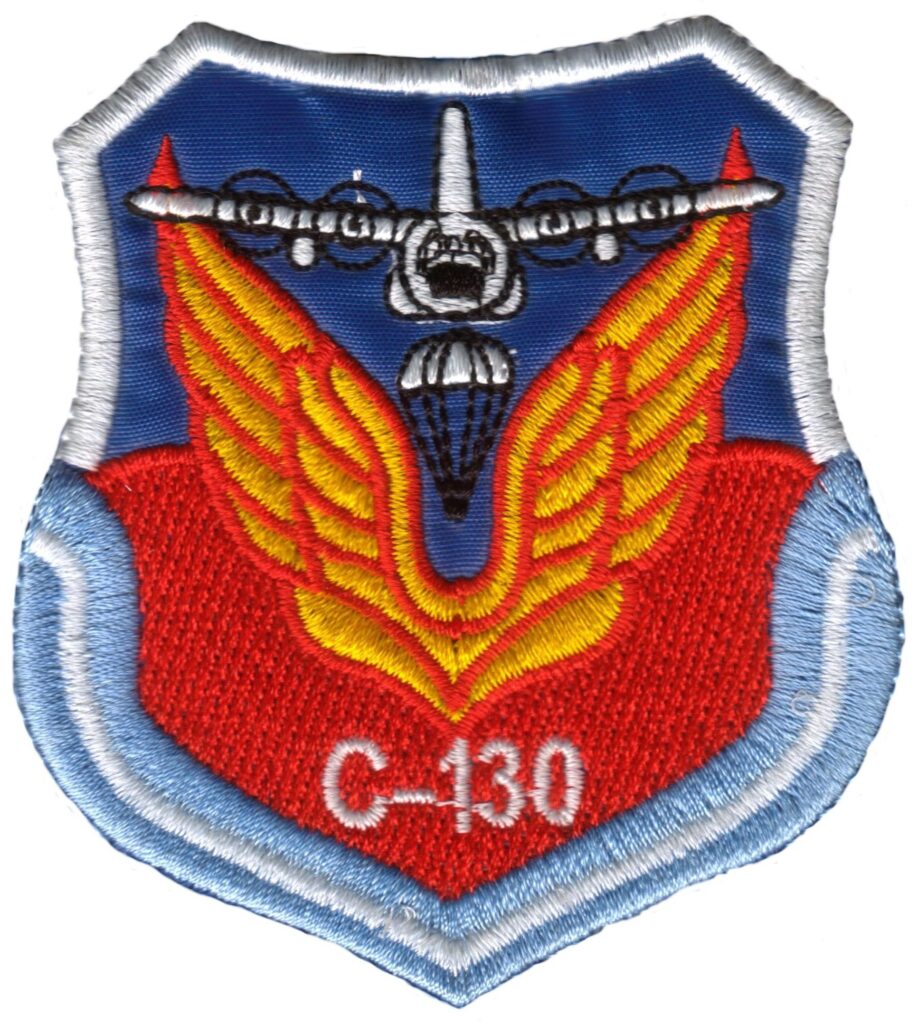

On a recent exercise FAA KC-130H (TC-69) from the Grupo 1 de Transporte Aéreo (Air Transport Group 1) arrived at the Brigada 2; on a short 30 minutes flight from El Palomar AB (11 miles/23 km outside Buenos Aires) with the argentine contingent consisting of three Hercules pilots, two navigators, electronic warfare officers and maintenance personnel. It was the start of joint exercise TANQUE.

Briefing
FAA Cap. Mariano Caneba (a KC-130H pilot, and AAR instructor) briefed all A-37 crews at Escuadrón 2 Operations room. Each of the three A-37 crews consisted of one FAU pilot plus an Argentine A-4AR instructor per aircraft. A run down on the Standard Operating Procedures (SOPs) based on the ATP 56 (NATO’s Air to Air Refuelling Procedures publication) and full details on the HDU (Hose Drum Unit) was given, which contains the 27 inch (68 cm) wide “probe and drogue” (basket) attached to a 93 ft (28 mt) long hose. The tanquer version of the ubiquitous Hercules can be identified externally by these two HDUs as well as the extra underwing fuel tanks – located between the engines at either side – carrying 9,000lb (4,082kg) of fuel each.

Watches were synchronized via GPS times, COMM frequencies noted (two VHF 1 and one UHF plus the emergency frequency 121.5) communications would be in English, the common language on multinational exercises, except on an emergency, when Spanish – the shared language of both nations – would be used.
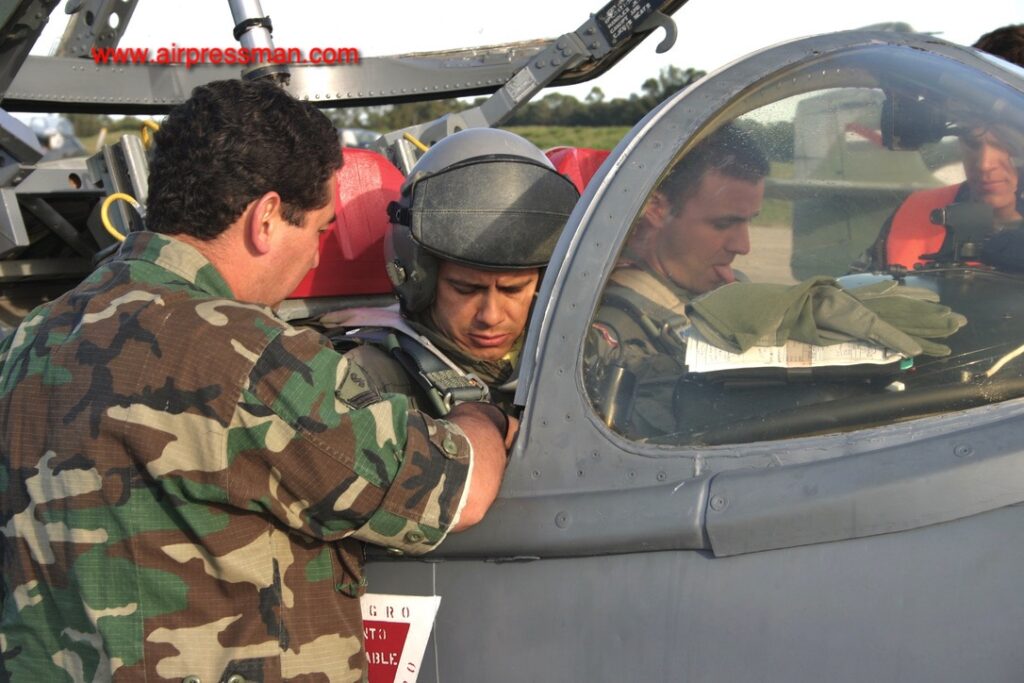
Major Carlos Correa, then Commander of EA2, instructed his pilots that were qualified instructors to provide during the prequel to the air refuelling exercise, as much time as possible handling the A-37 to the argentine A-4AR pilots as they lacked flying time on type. Thus the Argentinians could ascertain the jet’s behaviour during hookups. A pre-flight briefing carried out by Major Correa covered all possible emergency procedures and items as the possibility an Uruguayan pilot becoming incapacitated (the squadron had such an experience in the early 80s after a bird strike), the argentine crew member could land the jet with radio directives provided by other A-37 flying a “formación de vigilancia” (surveillance formation). Optimal ejection height (2000 ft AGL) for a controlled ejection (the old Cessna jets do not have a “Zero-Zero” type ejection seat), was also discussed as well as geographical locations – east of the field – to drop stores (for this mission the four pylon thanks each carrying 97,3 US gal (370 lit) in case of a total engine failure.

Racetrack Pattern
The FAU jets were radar vectored to a “initial point” 15 nm (30 km) from the Brigada to intercept the KC-130H (Call sign TANQUE) who maintained a racetrack holding pattern or orbit at the AARA (AAR Area) at FL 100 on the 170/350 radials from the local VOR (DUR) located at the Brigada 2. Tanker circuits would take 20 min and would be flown at 220 kts and clear of clouds. For collision avoidance the jets maintained FL 080 (2000 ft below the Hercules) until visual and calling “contact”, followed by a join up from 1000 ft below, one at a time and on straight and level flight.

After the “contact” call was achieved, annunciator lights fitted on the trailing edge tip of the KC-130H HDU lighting system provided the approaching pilot with visual cues on its state of readiness. Yellow indicated ready for connection, green “Contact” (where the probe is attached and fuel flows) and red “no go”. If no visual contact was possible on the initial point due to weather conditions, the FAU jets would abandon the area with a 90 degree formation turn. They would complete a one minute leg at 240 kts (444 km/h), descend back to FL 080 and contact HALCON on UHF 399.5 to obtain new vectors to the tanker.

Control Inputs
Fine control column inputs are needed to achieve a hook up and for the fuel to flow into the A-37s air refuelling probes. The basket has to be pushed forward by twice its own length (54 in/138 cm) increasing the prospect of spray over the jet, and consequent engine ingestion followed by high temperature and perhaps an engine compressor stall, as well as the possibility of a basket getting stack on the aircraft’s probe. In these scenarios, the standard emergency communication between the aircraft as to promptly detach from each other would be “breakaway” three times; in case of problems with the tanker, the underbelly red anti collision light would be illuminated as well as red light signals from torches, operated by two non-commissioned officers, located at either of the Hercules rear side doors.
Fuel Loads
Three hookups were achieved per mission; one “dry” (no fuel dispensed) and two “wet” ones – alternating on the KC-130H left and right probe and drogue for practice, due to the A-37s side-by-side seating and the limitations of a parallax view. Each Dragonfly was previous to the mission fuelled with a C22 fuel configuration – fuel on each of the two 90 US gal (342 lit) tip tanks, two pylon tanks (each carrying 97.8 US gal/372 lit) – one per wing – and internal fuel on the fuselage/ “seat” tank (79 US gal/300 lit). When the air refuelling panel switch in the cockpit is set to ON and remaining fuel is 440 lb, the internal “seat” tank and tip tanks will fill in three to four minutes with a HDU pressure of 50psi. If filling each of the four pylons is required, filling time is lengthened to four to five minutes. Such time must feel like an eternity to inexperienced flyers!

Each “wet” hook up provided 1,000 lb/454 kg of JP4 fuel, therefore the entire 2,000 lb/909 kg supplied was more than a third of the total fuel capacity of 5,500 lb/2,500 kg of the A-37. However in case of operational delays, it was agreed that the thirsty GE J85-17A engines (burning 395 US gal/1500 lit/h) could take on extra fuel. The three A-37s would then land back at the Brigada and exchange pilots on the ground, as the tanker continued in flight. To expedite events once landed the FAU jets taxied to the end of RWY 21 (the active runway) shut down the left engine, thus allowing the handling pilot to descend (the FAA instructor remaining on board) a new FAU pilot to strap in and launch immediately on a new sortie.

A lesson learnt on these proceedings was that whilst landing immediately after refuelling with the extra 2000 lb/909 kg of JP-4 fuel, the extra weight demanded more braking action on landing and heated up brake pads. FAU 282 (c/n 43267, ex USAF 69-6422) flown by 2nd. Lt. Osvaldo Rigamonti, suffered such a fault, directional control was lost whilst taxiing, engines immediately shut down and the A-37B ended up partially on the grass on a nose down attitude. Fortunately, no harm was done to the aircraft or crew.


All in all a valuable training event, from the cradle of Uruguayan combat aviation with crews and aircraft ready for the next Cruzex international exercise and mission demands. It has to be said that Uruguay has no true fighter ever since the 1960s, after the Lockheed F80 was retired from service; and its trainer the T-33A remained in service until 1993. Most recently a replacement has been sought to replace the obsolete A-37B (really an attack/COIN jet). Unconfirmed reports indicate that Uruguay’s government and FAU authorities have agreed on a plan to obtain a LIFT (Lead-In-Fighter-Trainer) aircraft on a multi role capacity, replacing the present day turboprop and jet combat aircraft.
In the meantime, Tanque will continue to provide valuable training for Uruguay’s A-37B force, helping it to prepare for its participation in the next major South American exercise.
AIR INTERCEPTION EXERCISE

During a recent Tanque training the FAU decided to run simultaneously an air interception exercise, using all its attack assets in preparation for the upcoming Ibero American Leaders’ Summit, taking place in Montevideo (the nation’s capital), where world leaders would be present (amongst them, the then Spain’s King Juan Carlos and UN top authorities) when its fleet would fly dissuasive CAP (combat air patrol) in temporarily restricted airspace over Montevideo.

The location of the Brigada in the centre of this small nation is optimal as, for example, a Pucara can reach any of the country’s borders in approximately 20 min dependent on weapons and fuel configuration. Often the Pucara fleet is prepared with the C-1B configuration (1280 lit of internal fuel [337 US gal]), 900 rounds of ammunition for the four Browning M2 7.62 mm machine gun and 270 rounds for the two Hispano Suiza HS-DCA804 20 mm canon) allowing the type to perform a 300 nm radius low level mission (below FL 150) at cruising speed of 240 knots (444 km/h) – top speed for these “slow movers” is 405 kts – in 1.2 hours flight time.

On the day of the author’s visit, three Pucara and same number of PC-7U were on the tarmac ready to scramble with its pilots in the cockpits on immediate alert. The Pilatus fleet were armed with 7.62 machine gun pods. Their target was a FAU Cessna C-206H from the Escuadrón de Enlace (Liaison Squadron) acting as an illegal aircraft flying north of the base 30 miles (62 Km) north of the Brigada.
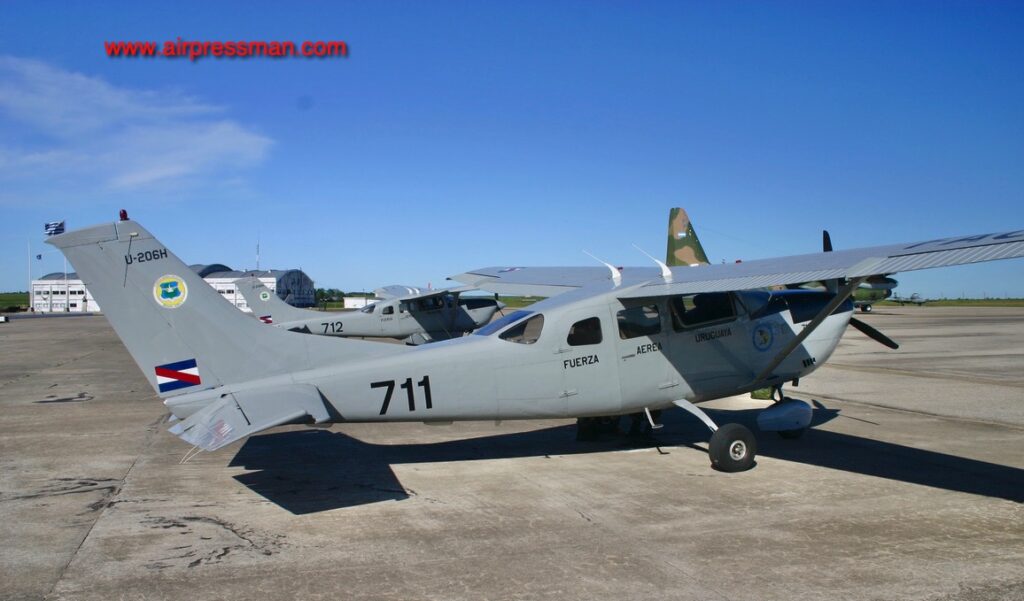
Once airborne, each aircraft was under the guidance of HALCÓN (FALCON), the codename of Brigada 2 ATC control radar ground controllers. Pucara reaction time – for this distance and flying at 240 kts (444 km/h) – is 8 min with the C-1B configuration. The intercepting aircraft were reminded by ATC to ensure “weapons safe” whilst provided with bearing and distance to the Cessna. Upon initial visual contact, pilots would respond “Tally” – their excitement easily heard on their voices – and “Judy” as they proceeded “solo” with the interception. With the most British of RT terminology – and the twin engine Pucara looking like a modern day DH Mosquito – thinking back to WW2 was unavoidable. Common in the region, air crews no longer utilize their call signs on the RT, to avoid pilots being identified and reprisals taken against themselves or their families by drug traffickers. In its place the Pucara used the “Sable” (Sabre) call sign and the PC-7U “Lanza” (Spear).
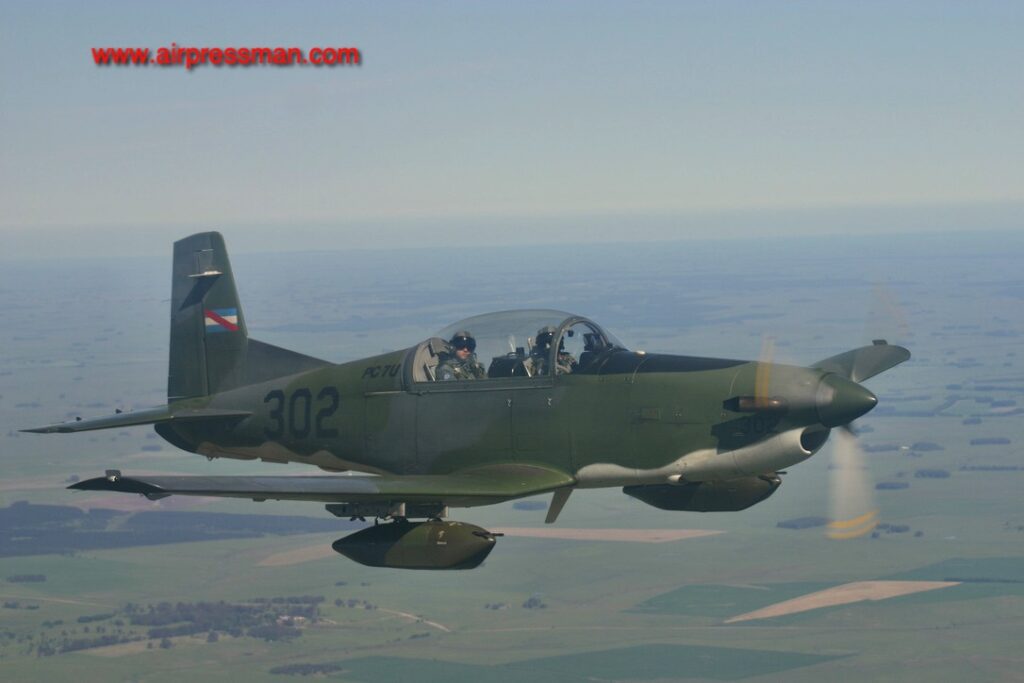
Approaching from the stern, once alongside the port side of the unidentified aircraft FAU pilots would follow ICAO intercept procedures and report to HALCON, aircraft type, heading and registration details then await directives. Radio contact was then attempted and if unsuccessful a card with instructions to the offending aircraft and/or a radio frequency would be shown. If forced to land the interceptor would signal this action by lowering its undercarriage.


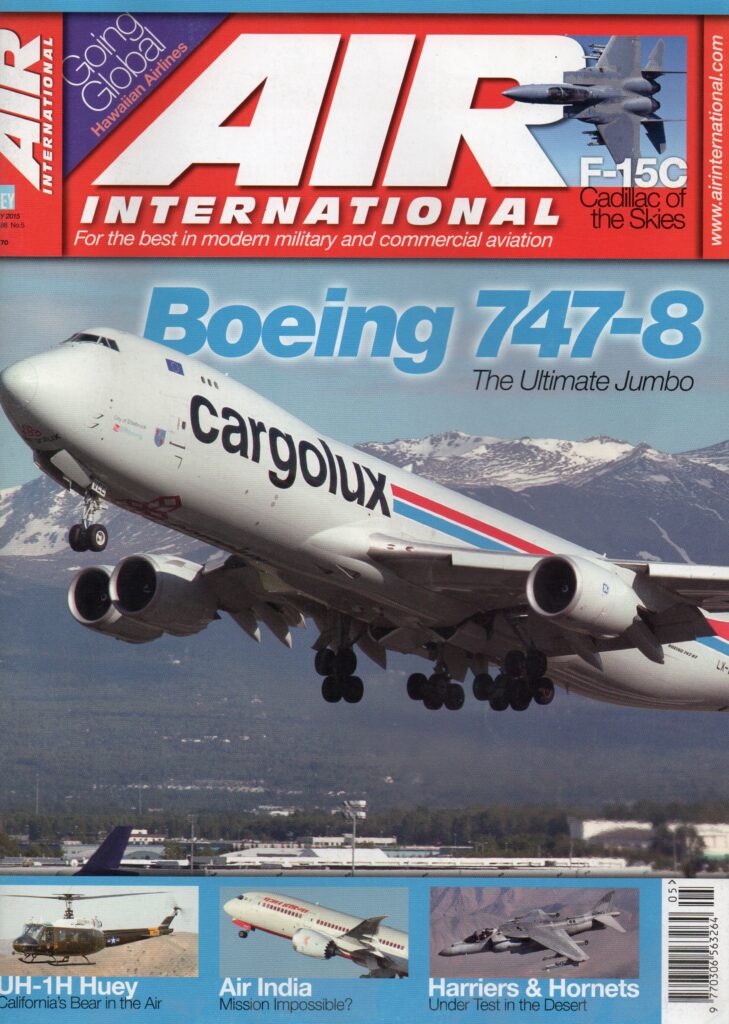

.png)
.png)
